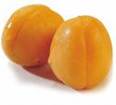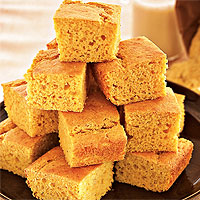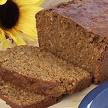
We know we bang this drum often, but since it’s the start of a grand new year, we want to help launch it with yet another reminder: Scientific evidence suggests about one-third of the 565,650 American cancer deaths that were expected to occur in 2008 would be related to obesity, physical inactivity, and nutrition–and thus,
could have been prevented!
For those who do not use tobacco, dietary choices and physical activity are the most important modifiable determinants of cancer risk, according to the American Cancer Society (ACS).
In the report, “Cancer Facts and Figures 2008”, the ACS outlines the four most important recommendations for diet and physical activity for reducing cancer risk—principles for good health, that have a direct effect on cancer risk:
 If you drink alcoholic beverages
If you drink alcoholic beverages, limit consumption (no more than two drinks/day for men and one drink/day for women. Alcohol consumption is a proven cause of cancers of the mouth, pharynx, larynx, esophagus, liver, and breast. For each of these cancers, risk increases substantially with intake of more than two drinks/day).
 Maintain healthy weight
Maintain healthy weight (balance caloric intake with physical activity; avoid excessive weight gain; if currently overweight or obese, LOSE and maintain weight).
The
best way to achieve healthy weight: balance food intake with physical activity. Excess body fat is reduced by restricting caloric intake and increasing physical activity. Caloric intake is reduced by decreasing food portion sizes and limiting intake of high-calorie foods (e.g., those high in fat and refined sugars such as fried foods, cookies, cakes, candy, ice cream, and soft drinks).
Replace high calorie foods with more healthy vegetables and fruits, whole grains, and beans.
 Adopt a physically active lifestyle
Adopt a physically active lifestyle (adults: engage in
at least 30 min. of moderate to vigorous physical activity—besides usual activities, five or more days/week. 45 - 60 min. of intentional physical activity is preferable. Children/adolescents: Engage in
at least 60 min./day of moderate to vigorous physical activity at least five days/week).
 Consume a diet HIGH in plant sources
Consume a diet HIGH in plant sources (eat smaller portions of foods and beverages to achieve and maintain a healthy weight; eat 5+ servings of a variety of vegetables and fruits each day; eat whole grains in preference to processed (refined) grains; limit processed and red meats).
Many epidemiologic studies have shown that populations that eat diets high in vegetables and fruits and low in animal fat, meat, and/or calories have reduced risk of some of the most common cancers.
 Eat colorfully
Eat colorfully. Bright colors in fruits and vegetables signals the presence of health-promoting phytochemicals with anti-inflammatory properties. For instance:

The red in tomatoes helps reduce the risk of heart disease, prostate cancer, and other types of cancers.

The yellow in corn protects against macular degeneration, the number-one cause of blindness in the elderly.

The orange in carrots and sweet potatoes helps prevent heart disease by lowering cholesterol and helps reduce the risk of stroke.

The green in dark, leafy greens helps prevent cancer.

The blue in blueberries helps protect memory and motor function as you age, and helps fight cancer and heart disease.

The purple in Concord grapes and grape juice helps prevent heart disease.
And more important advice: eat organically if at all possible. Here is a list of the most important foods to eat organically. If you can’t find these organically, sidestep harm and still eat vitamin-rich foods by choosing great alternatives that contain the same valuable vitamins and minerals:

High-pesticide food: Strawberries
Main nutrient: Vitamin C
Healthy alternatives: Blueberries, raspberries, oranges, grapefruit, kiwifruit, watermelon

High-pesticide food: Bell peppers
Main nutrient: Vitamin C
Healthy alternatives: Green peas, broccoli, romaine, lettuce

High-pesticide food: Spinach
Main nutrient: Vitamins A and C
Healthy alternatives: Broccoli, Brussels sprouts, asparagus

High-pesticide food: Cherries
Main nutrient: Vitamin C
Healthy alternatives: Oranges, blueberries, raspberries, kiwifruit, blackberries, grapefruit

High-pesticide food: Peaches
Main nutrient: Vitamins A and C
Healthy alternatives: Nectarines, watermelon, tangerines, oranges, grapefruit

High-pesticide food: Mexican cantaloupe
Main nutrient: Vitamins A and C and potassium
Healthy alternatives: U.S. cantaloupe grown from May to December, watermelon

High-pesticide food: Celery
Main nutrient: Carotenoids
Healthy alternatives: Carrots, broccoli, radishes, romaine lettuce

High-pesticide food: Apples
Main nutrient: Vitamin C
Healthy alternatives: Watermelon, nectarines, bananas, tangerines

High-pesticide food: Apricots
Main nutrient: Vitamins A an C and potassium
Healthy alternatives: Nectarines, watermelon, oranges, tangerines

High-pesticide food: Green beans
Main nutrient: Potassium
Healthy alternatives: Green peas, broccoli, cauliflower, Brussels sprouts, potatoes, asparagus
Now here are a couple whole-grain recipes to start us on our way to better health:
Whole Grain Cornbread

1 c cornmeal
1/2 c whole wheat pastry flour
1/2 c whole wheat flour
2 tsp aluminum-free baking powder
1/2 tsp sea salt
Sprinkle of ground cinnamon (optional)
1 egg, beaten
1 c low-fat milk (or soy or rice milk)
6 Tbsp olive or coconut oil
1/4 c pure maple syrup
Preheat oven to 400°. Coat a 9" x 9" baking pan with cooking spray. In large bowl, mix cornmeal, flours, baking powder, salt, and cinnamon (if using). In separate bowl, mix egg, milk, oil, and maple syrup. Stir wet ingredients into dry ingredients, just enough to mix. Pour batter into prepared pan. Bake for 25 - 30 min., or until golden brown.
 Download this recipe.
Raisin Spice Quick Bread
Download this recipe.
Raisin Spice Quick Bread

1 c whole wheat pastry flour
1 c oat flour
2 tsp aluminum-free baking powder
1 1/2 tsp allspice
1/2 tsp ground cinnamon
1/2 tsp sea salt
1 lg egg (room temperature)
1 c soy or 2% milk
1/4 c brown sugar
2 Tbsp butter
1 tsp vanilla extract
1/2 to 1 c raisins
Preheat oven to 350°. Coat an 8" x 4" loaf pan with cooking spray. In large bowl, combine flours, baking powder, allspice, cinnamon, and salt. In medium bowl, lightly beat egg with milk, sugar, butter, and vanilla. Pour in the flour mixture; stir until just combined. Fold in raisins. Pour batter into pan, and smooth. Bake until a wooden pick inserted in the center comes out with a few crumbs attached, 45 - 50 minutes. Cool in pan on rack for 10 min.
 Download this recipe.
Information Courtesy Melissa Breyer of Care2.com.
Download this recipe.
Information Courtesy Melissa Breyer of Care2.com.
(If YOU have a smart idea, won't you share it? Life is so much easier and we accomplish so much more when we pool our resources. And after all, we're all in this together. So email
patty@dvo.com or
alice@dvo.com with YOUR Smart Ideas!)
Contribute to the Cook'n Club!
DVO would love to publish your article, prose, photography and art as well as your cooking, kitchen and nutrition tips, tricks and secrets. Visit the Newsletter Submission / Win Win for All section in our Forum for more information and details.



